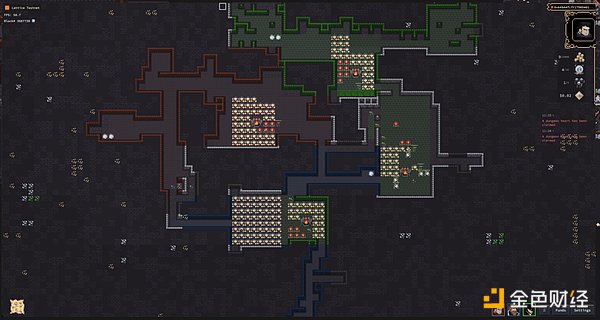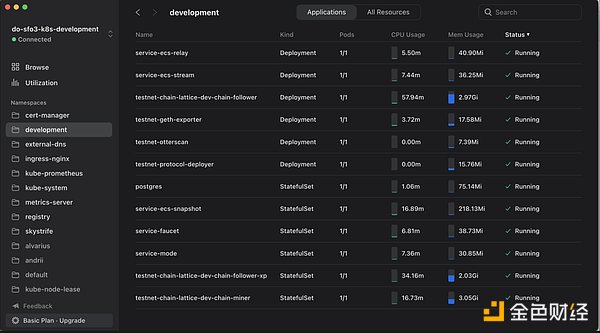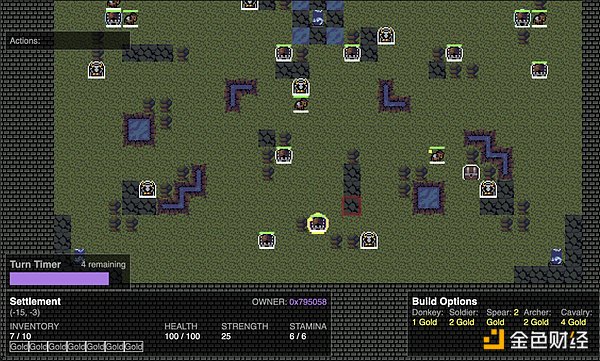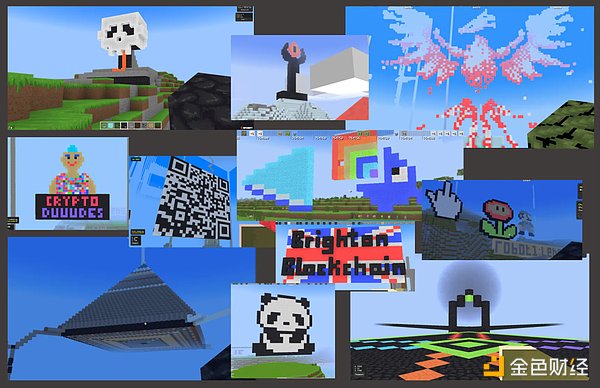Original Author: Lattice Translation: FunBlocks
What are the stories of Lattice, an important driver in the whole-chain gaming industry? We have translated the introduction to their development history on the Lattice official website. From the development experience of Lattice, we can better understand the initial intentions and ideals of these early promoters.
Translator’s Note: “Although there have been early attempts in the blockchain industry to explore whole-chain gaming, it must be acknowledged that the true foundation and clear direction for whole-chain gaming as an independent track came from the builders of the Dark Forest ecosystem and organizations like Lattice that were established afterwards. After achieving phased success in the Dark Forest, they established important projects such as Lattice, MUD, and Argus to support the development of the whole-chain gaming ecosystem.”
So what is the relationship between them, and what are the stories of Lattice, an important driver in the whole-chain gaming industry? We have translated the introduction to their development history on the Lattice official website. From the development experience of Lattice, we can better understand the initial intentions and ideals of these early promoters.
- Some Speculations on the Behind-the-Scenes Identity of the Mysterious Whale nd4.eth
- Visa Experimental Solution Overview How to Pay On-chain Gas Fees with Visa Card?
- Detailed Explanation of Intent-Based Architecture Concepts and Challenges
01. Seed (Spring 2021)
In 2020 and 2021, Ethereum and the applications built on it became increasingly complex, but there was still a huge room for improvement in developer tools and project deployment. While DeFi was rapidly developing and NFTs were in their infancy, there were few applications that could provide interesting experiences, promote the emergence of new user behaviors, or offer the same complexity as later autonomous worlds. Ethereum was becoming the world’s financial computer, but did it still have a chance to realize its ideal of becoming a world computer?
In that period of controversial DeFi forks, liquidity mining, and early NFT games, a new experiment emerged. This experiment was Dark Forest, which was completely different from other applications deployed on the EVM before. Dark Forest was the first whole-chain game – the game logic and all data were written on the chain, and the game state could be derived from the history of the chain. There were no servers, no intermediaries, only a pure and open system provided by the blockchain. Dark Forest was also the first on-chain game to use zkSNARKs to create information asymmetry.
Dark Forest attracted hundreds of players who were initially attracted by the gameplay and later started building new clients and plugins for the game. These included an in-game NFT marketplace, plugins that could automatically move players, a “remote SNARKer” that improved the speed of players’ map exploration, an exchange where users could sell their Dark Forest planet locations, and dozens of other plugins developed by the community to enhance core functionalities. Dark Forest was becoming a complex network with emerging behaviors.
In 2020, Ludens, the founder of Lattice, sent a message to a stranger named Gubsheep, who was one of the developers behind the Dark Forest game.

Soon, Ludens went to Mexico to start working with the Dark Forest team. These ideas and attempts contributed to the birth of future Lattice and MUD.
02. Germination (Summer 2021 – Winter 2021)
In the summer of 2021, Ludens wanted to create a new game. He collaborated with Alvarius and they started developing zkDungeon, a fully on-chain game that combines elements of board games and battle royale. After several months of relentless iteration, the team finally had a well-functioning demo version.

However, there were still some problems. At that time, the development tools for Ethereum couldn’t handle such ambitious applications. Ludens and Alvarius hoped to build developers for the client and plugins on top of zkDungeon, so that they could have a seamless and intuitive experience, but there was no development framework that allowed the community to easily contribute. We still needed to improve something.
03. Breaking Ground: The Birth of Lattice and MUD (Spring 2022 – Summer 2022)
Ludens and Alvarius, with the help of other collaborators, realized that they needed to build an operating system before they could continue developing the game. They needed a framework and protocol to handle more complex game code and eliminate the developer-unfriendly development patterns in traditional smart contract development. After exploring many game development frameworks, the team discovered the Entity-Component-System (ECS) model, which became the foundation of MUD v1 (the team’s game engine).
In the spring of 2022, at the D.E.F.C.O.N. conference in Amsterdam, Ludens announced Lattice, a company-like organization. Alvarius then provided a more detailed introduction to MUD and the ECS framework. Soon, Kooshaba joined Lattice, one of the core developers of the Dark Forest team. Biscaryn also joined us and became our CEO. In the summer of 2022, we were officially established.
That summer, the team began to develop MUD with full force. We held a summit in New York and started developing chains, infrastructure, and services that would later become the MUD testnet and MODE. At the same time, we started developing a game called “MUD War,” which eventually evolved into “Sky Strife.”
In August 2022, Ludens published “Autonomous Worlds (Part One)” https://0xLianGuairc.org/blog/autonomous-worlds, which would become the cornerstone for any team wanting to build complex, emergent systems on Ethereum.


04. Moving towards the mainstream (Autumn 2022 – Winter 2022)
In the autumn of 2022, when MUD v1 entered a relatively stable phase, we invited over a dozen teams to come to London to participate in an event themed around building games and applications using MUD. We were amazed by the complexity and innovation they showcased. Our initial intuition of “the need for a powerful operating system to support on-chain applications” was validated.

Internally, the Lattice team is working hard on developing a new game called OPCraft, which is a voxel-based full-chain game that challenges the performance limits of MUD and Optimism (Optimism is an EVM-compatible rollup that deploys OPCraft). In the ten days after OPCraft went live, the game hosted various complex activities that emerged on-chain – new plugins, custom smart contracts, and even a highest leader, all appeared when the game went live.

In October 2022, at Devcon in Bogota, the team showcased MUD v1 to the public for the first time. Shortly after, we held an 80-person self-world workshop to provide a more detailed demonstration of the capabilities of MUD v1. In November, Frolic, one of the most productive plugin contributors on OPCraft, joined the Lattice team full-time.
05. Continuous Development (2023 – Present)
In the new year, we welcomed five new members, responsible for engineering, operations, and product management, respectively. The development of Sky Strife has entered a good stage, and we have launched new tutorials for MUD to make it easier for new developers to enter the MUD ecosystem.
We are more focused on improving MUD and building new features to bring MUD v2 to a stable state as soon as possible. The core of MUD v2 is modularity: we have modularized the data model to bypass data storage driven by the Solidity compiler. We have modularized the plugin system to provide more flexibility for developers using MUD. We have modularized the sync stack to allow synchronization of contracts and client states and support SQL query clients and automatic indexers. We provide continuous feedback for the development of MUD v2 through our work on Sky Strife and the needs of other developers building applications using MUD.
In the spring of 2023, at an event we co-hosted with ETHGlobal, we received over 400 submissions from hackers for over 100 different projects built on MUD v2. We continue to focus on MUD v2 and many internal projects related to EVM infrastructure.
Despite the various directions of our work, our focus remains unchanged: to build products that are developer-friendly and compatible with the Ethereum ecosystem, making it easier for everyone to drive the development of on-chain systems.
Like what you're reading? Subscribe to our top stories.
We will continue to update Gambling Chain; if you have any questions or suggestions, please contact us!